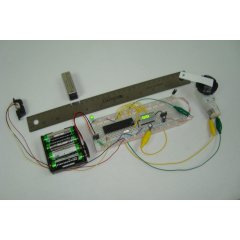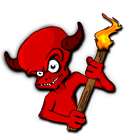Categories
- animatronics (12)
- apple (11)
- arduino (179)
- art (41)
- articles (121)
- artificial intelligence (11)
- automation (421)
- avr (205)
- bitcoin (3)
- breadboard (9)
- cameras (57)
- cars (26)
- cell phones (28)
- clothing mods (21)
- console mods (26)
- dangerous (94)
- desktop mods (24)
- embedded (5)
- flying things (54)
- fpga (22)
- gaming creations (108)
- interface (225)
- internet (17)
- laptop mods (6)
- lasers (22)
- linux (7)
- magnetic (3)
- medical (12)
- microcontrollers (51)
- misc projects (152)
- msp (12)
- music (124)
- pic (90)
- projects (23)
- pyroedu (76)
- raspberry pi (26)
- robots (312)
- security (36)
- sensors (307)
- software (200)
- solar (19)
- stamp (9)
- tools (149)
- tutorials (98)
- Uncategorized (45)
- usb (44)
- wireless (256)
Sponsors


Posted January 7, 2013 by Chris
“Digital timer switches are used to control the operation of electrical devices based on a programmed schedule. This project describes a programmable digital timer based on a PIC16F628A microcontroller that can be programmed to schedule the on and off operation of an electrical appliance. The appliance is controlled through a relay switch.”

Posted January 3, 2013 by Chris
“In this article, we will go step-by-step through the process of understanding, designing and building a system that uses an infrared proximity sensor for input, correlates that input to how far away an object is from the sensor and then drives a motor and some LEDs at distinct speeds depending upon the proximity of the object.”

Posted December 21, 2012 by Chris
“Originally created in 2006, the Kilroy Development Board has given thousands (~450 a year) of middle and high school students the opportunity to learn basic electronics, BASIC programming and soldering. Using PICAXE’s 18X, and now the 20×2/20m2 microcontroller, students can now program in BASIC and take full advantage of Arduino’s wide range of shields.”

Posted December 7, 2012 by Chris
“This project implements a real-time audio spectrum analyser using a PIC18F4550 8-bit microcontroller. The spectrum frequency analysis is performed by a highly optimised 16-bit Fast Fourier Transformation (FFT) routine coded entirely in C. The output from the FFT is displayed using a 128×64 graphical LCD to allow a real-time view of an audio signal.”

Posted October 7, 2012 by Chris
“This is my electronic combination lock to use with an outdoor gate. The functionality is implemented in software. It turns on a relay (usually to open a door) for a few seconds if someone enters the valid code. Alternatively, it works as an ON/OFF switch, which toggles the relay each time the code is entered.”

Posted September 27, 2012 by Chris
“The concept for this small birthday present was to create a small heart shape with red LEDs and then to draw a heart shape underneath it on the PCB as a backdrop. Then a microcontroller was added to control the LEDs for both fade and pattern control. Controlling LEDs via PWM allows us to save precious battery life and control the exact brightness of each specific LED.”

Posted September 23, 2012 by Chris
“Inductors are not the most popular parts in constructions.
The bad reputation comes from the lack of good measuring tools.
This project will explain how to build a very accurate and simple inductance, and capacitance measuring tool. ”

Posted September 15, 2012 by Chris
“Control up to 8 devices by this easy constructable remote control. It can work as a radio or infrared remote control, depending on the components. Each device output can be configured to be momentary (turned on while you press the button) or latched. Latched outputs can be toggled on/off by one button per channel, or turned on and off by two buttons per channel.”

Posted August 31, 2012 by Chris
“So far, I have only played around with the PIC16F84 PIC chip, with exception to using a PIC16F876 with the HamHUD. I have found the most documentation is on the 16F84. I have also found the most homebrew programmers for this PIC. I am starting to use 16F877 PICS now for larger projects.”

Posted August 28, 2012 by Chris
“Imagine this: you have your headphones on. When you turn your hand to the right there are the dark and low sounds. Turn your hand to the left and you hear bright shining bells. The other hand lets you shift the sound left or right as you like or just make more space as you turn forward. You can slowly turn from one side to the other, from dark to bright, from closed to wide, and the sound in your head follows your motion.”







